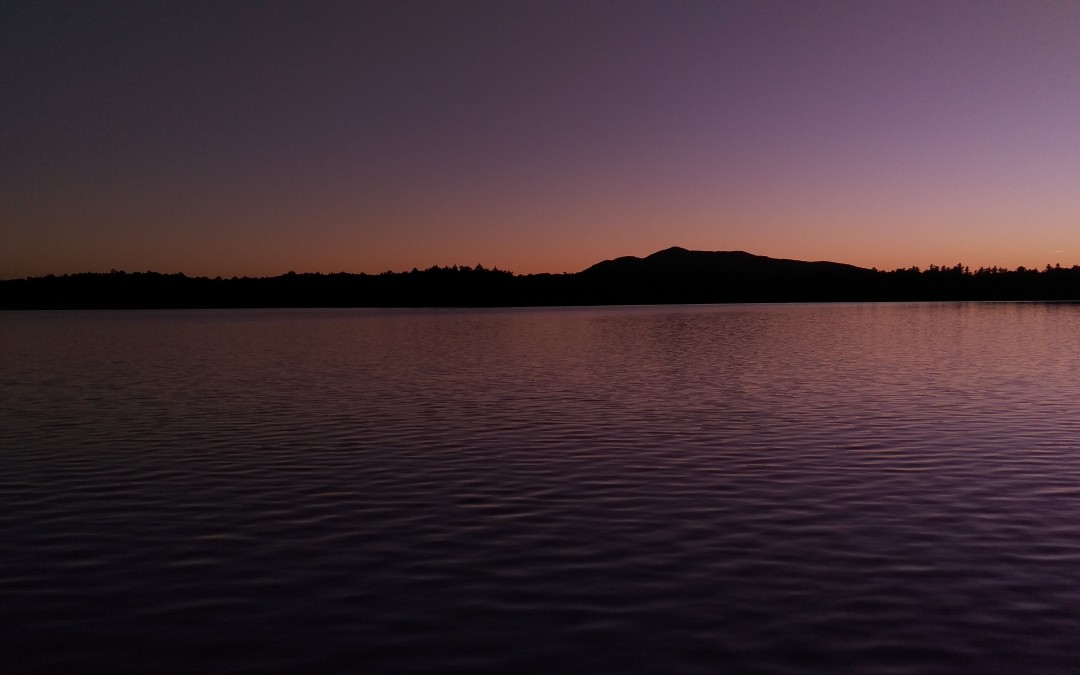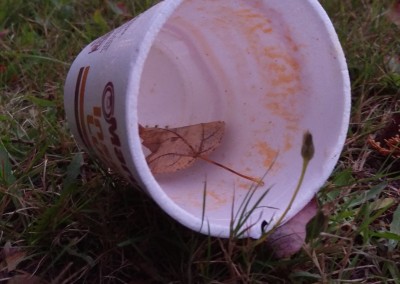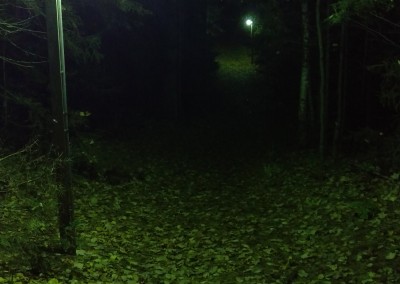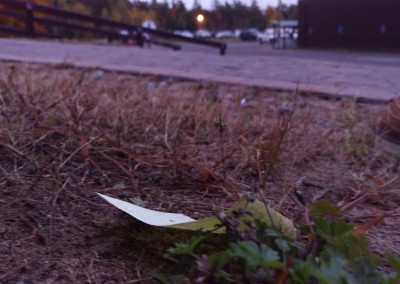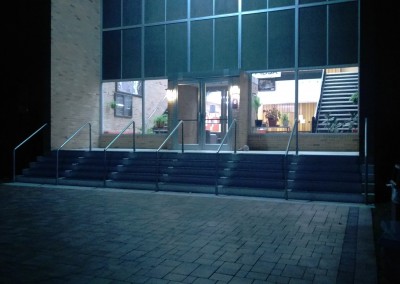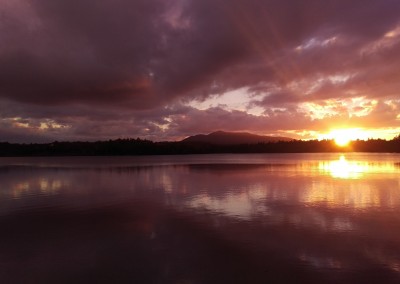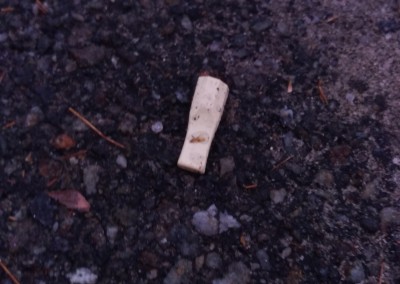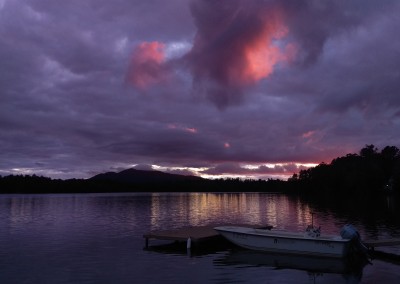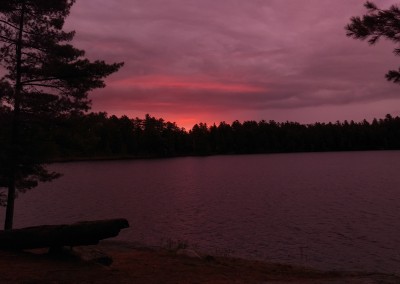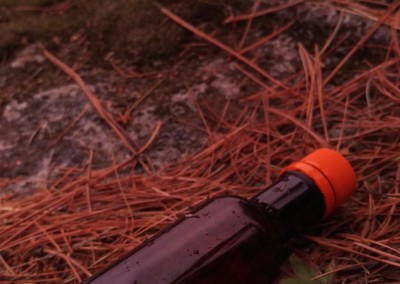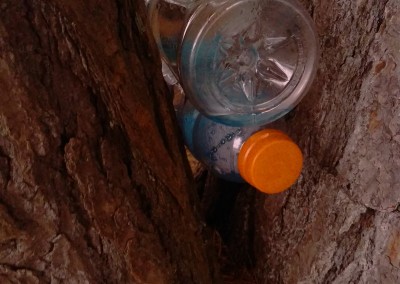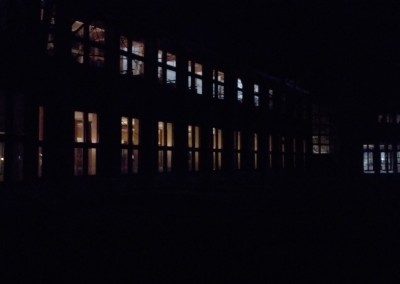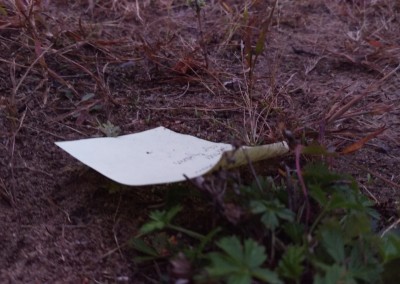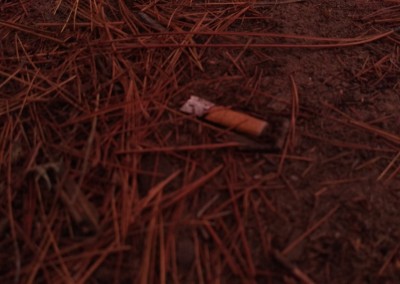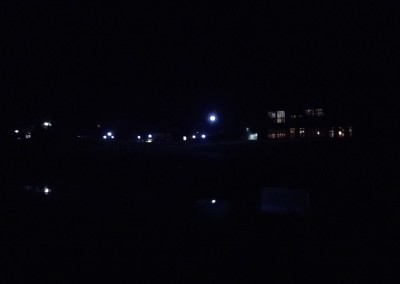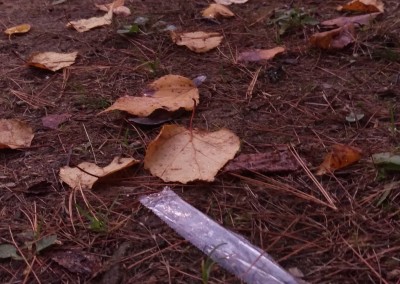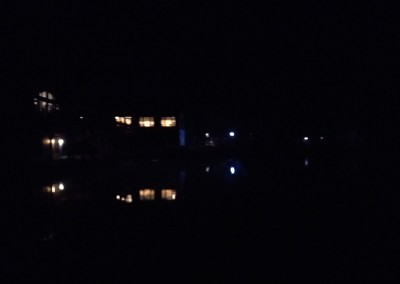by Kevin Shea
The sun has not yet peaked over the hills to the east. It’s early in the morning on a Saturday and night refuses to let go of its hold on the Adirondacks. Everyone is asleep after a long night of socializing and relaxing, and Paul Smith’s College is in the process of rehabilitation.
Fog rolls over the path to The Point, creating a barrier in front of the little hideaway from home. A smashed pumpkin rests at the entrance to the lonely peninsula – is it the same pumpkin which sat on the porch of LMS only days ago?
This is where students come to unwind and watch the lapping of the waves along the rocky shore. A well-placed bench overlooks the majestic St. Regis Mountain. There is no better place to detach from the endless cycle of homework, essays, and tests. The natural beauty of not only The Point, but the campus as a whole, creates a deep connection for the denizens of Paul Smith’s. Those who chose this college as their home for the following years remember the awe instilled in them by the intrinsic beauty of this campus.
But mankind has a gift for defiling purity. Beside the pine needles and deciduous leaves lie rejected cigarette butts. A cup of noodles spews its contents over a log. Two energy drink bottles violate the crevice of an evergreen tree. The mark the students have made on this area elicits a gag from visitors. How could an environmental school’s students degrade the innocence of a place they are taught to respect?
The indifference of certain students throughout campus is illustrated through the “artwork” left on lawns in front of study halls, on steps outside of dormitories, and in the seclusion provided by the sagacious oaks and cedars standing watch over the community. It is difficult to miss the beer cans crumpled and tossed beside the many walkways on campus; these are artworks best left in a trash bag.
The litter poisons the memory of our first visits on campus during the spring and fall, and the naivety is now gone. The escape from society, and its disregard for solitude in nature, which many of us craved, has been replaced with a tease: a mucked piece of Eden – is it still to be called Eden after the apple is chewed, spat up, and left in plain view?
My return to the dorm room was filled with many more gifts. Bottles of all brands littered the lawns in front of Freer. Each new Coors can draws forth a new retch: why anyone would drink dishwater to relax is beyond me. As I look up, however, a trick of the lights forces me to do a double take. Several lights in the learning halls blaze with a sickly white light; Is there a class being taught at four in the morning?
A tug at the main doors of Freer gives nothing away, in fact every door of not only the academic buildings, but the student center, the library, the forester’s cabin, and the gymnasium, are sealed shut. And yet, lights are burning brightly – perhaps for ghosts, or elves?
Once you realize how much electricity flows through the veins of the many buildings at night, it is hard to ignore. My walk through the campus is rich with luminosity. Trees which should be blanketed by darkness are blinded by the cancerous lights of a classroom. Vibrant reds and yellows appear sickly from the interrogation of a streetlamp. The lights from the multitudes of streetlamps reveal a more frightening image than if the lights were kept off.
In the seclusion of night, beyond the forestry cabin, lies a path hidden from the repressive eyes on campus. If one is courageous enough to slip away from the well-lit paths, they may see a brilliance of stars, painted with the most delicate of brushes upon the heavens. Nowhere else is such beauty available on campus during the night. Orange and yellow hues fog our visibility to the miracles being performed above.
I step into the dead of night and instantly I know, this is how it is meant to be: the visual gateway above un-penetrated by the unwelcome, mechanically-produced rays; the wonder of the universe tickles the mind with fantastic thoughts stripped of the concept of impossible – the gut-wrenching dance of the stars. Here I am not Kevin Shea, student of the environment. Here I am a dot in the masterpiece of the universe.
The dream ends, however, when I step out of the night, and into the fabricated daytime. The mysteries of the universe, questioned only in the dead of night, are drowned out by the labor of billions of watts all at work. Perhaps it is time for students, teachers, faculty, and staff – all of us adults – to come together and put our teachings and lessons into practice?
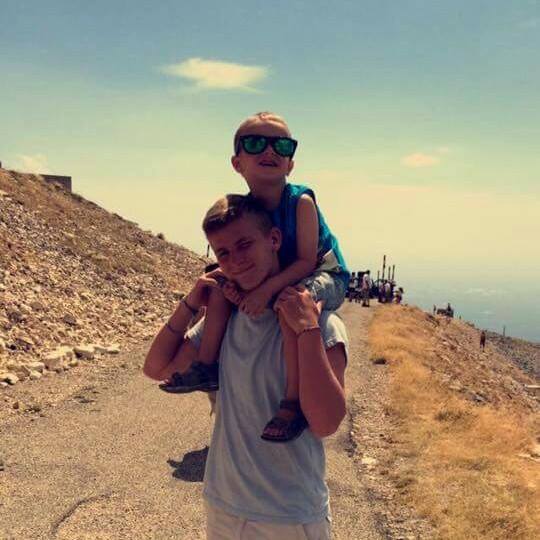
Kevin is an editor for The Apollos, read his full bio here!

